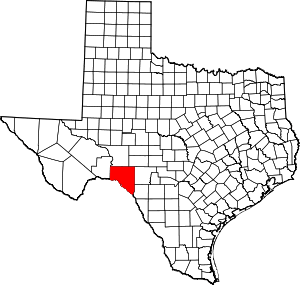Laughlin Air Force Base
Laughlin Air Force Base (IATA: DLF, ICAO: KDLF, FAA LID: DLF) is a facility of the United States Air Force located in Del Rio, Texas. As a census-designated place, it had a population of 1,569 at the 2010 census.[2]
| Laughlin Air Force Base | |||||||||||
|---|---|---|---|---|---|---|---|---|---|---|---|
| Near Del Rio, Texas in United States of America | |||||||||||
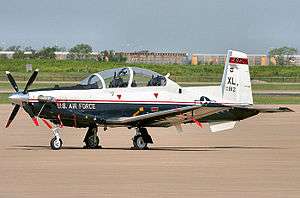 A Beechcraft T-6 Texan II of the 47th Flying Training Wing based at Laughlin AFB, Texas | |||||||||||
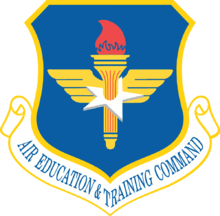 | |||||||||||
 Laughlin AFB | |||||||||||
| Coordinates | 29°21′34″N 100°46′41″W | ||||||||||
| Type | US Air Force base | ||||||||||
| Site information | |||||||||||
| Owner | Department of Defense | ||||||||||
| Operator | US Air Force | ||||||||||
| Controlled by | Air Education and Training Command (AETC) | ||||||||||
| Condition | Operational | ||||||||||
| Website | www.laughlin.af.mil | ||||||||||
| Site history | |||||||||||
| Built | 1943 (as Laughlin Army Air Field) | ||||||||||
| In use | 1943 – present | ||||||||||
| Garrison information | |||||||||||
| Current commander | Colonel Lee G. Gentile, Jr. | ||||||||||
| Garrison | 47th Flying Training Wing (Host) | ||||||||||
| Airfield information | |||||||||||
| Identifiers | IATA: DLF, ICAO: KDLF, FAA LID: DLF, WMO: 722615 | ||||||||||
| Elevation | 329.4 metres (1,081 ft) AMSL | ||||||||||
| |||||||||||
| Source: Federal Aviation Administration[1] | |||||||||||
Overview
Laughlin AFB, the largest pilot training base in the US Air Force, is home to the 47th Flying Training Wing of the Air Education and Training Command. On weekdays, the airfield sees more takeoffs and landings than any other airport in the country.
History
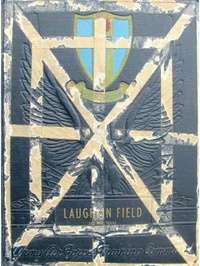
Laughlin AFB was originally named Laughlin Army Air Field on March 3, 1943, after Jack T. Laughlin, a B-17E Flying Fortress pilot. He was trained as a pilot and was actually co-pilot of B-17E, tail number 41-2476. The day of his first bombing mission, he was bumped by the Group Commander Major Stanley K. Robinson (Robinson was co-pilot next to pilot Capt. Walter W. Sparks). Major Robinson brought along his own combat experienced navigator, Lt. Richard Cease. Laughlin had no assigned position on the plane for the mission. He became Del Rio's first World War II casualty when the plane he was flying in (most likely as a waist gunner for the mission) was lost at sea, having succumbed to damage received over the Makassar Strait on 29 (or 28) January 1942. The damage occurred during two bombing runs against Japanese warships and transports in the Makassar Strait off the coast of Balikpapan, Borneo. The field became simply Laughlin Field on November 11, 1943, and later an Army Air Force Auxiliary Field. During World War II, Laughlin's primary mission was the training of B-26 pilots and aircrews. It was closed in October 1945.
Laughlin Air Force Base reopened on May 1, 1952. In October 1952, ATC transferred the base to Crew Training Air Force (CREWTAF) and activated the 3645th Flying Training Wing (Fighter), as a combat crew replacement training facility for pilots headed for Korea. Training provided new pilots with basic bombing and gunnery combat skills in the F-80 Shooting Star, F-84 Thunderjet, and T-33 jet aircraft, but within a short time crews used only the T-33. In September 1955, Laughlin came under the control of the Flying Training Air Force and switched missions with Williams Air Force Base, Arizona. Laughlin undertook single-engine pilot training, still using the T-33.
The Air Force transferred jurisdiction of the base to the Strategic Air Command on April 1, 1957, and the 4080th Strategic Reconnaissance Wing (Light) moved there from Turner Air Force Base, Georgia. Following graduation of the last class in March 1957, ATC inactivated the 3645th FTW. The 4080th Wing provided high-altitude reconnaissance and air sampling using the Lockheed U-2A and the RB-57D Canberra. The 4080th Strategic Reconnaissance Wing was redesignated the 4080th Strategic Wing on June 15, 1960, and the RB-57 mission was phased out.
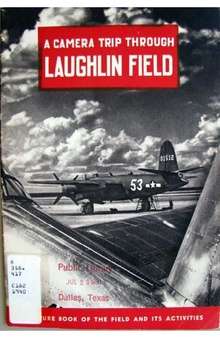
Laughlin U-2s were among the first to provide photographic evidence of Soviet missile installations in Cuba in 1962 when 4080th U-2 pilot Major Steve Heyser flew his U-2C over Cuba after taking off from Edwards AFB, California. Heyser landed at McCoy AFB, Florida, following the mission, with McCoy becoming a U-2 operating location for the duration of the Cuban Missile Crisis. The film from Major Heyser's mission was developed, analyzed and the photos were shown to the United Nations Security Council on October 22, 1962, proving to the world, that offensive missiles were on the island of Cuba.
Another 4080th pilot, Major Rudolf Anderson, Jr., perished when his U-2 was hit by shrapnel from a Soviet-made SA-2 on October 22, 1962, while overflying Cuba from McCoy AFB. While the U-2 did not suffer a direct hit, Anderson was struck by fragments from the proximity fused warhead's explosion which penetrated and compromised his pressure suit (at altitude, unconsciousness and death came very quickly). His body was returned to the U.S. following the crisis, still clad in its pressure suit. Major Anderson posthumously became the first recipient of the Air Force Cross. Laughlin's primary operations training complex, Anderson Hall, is named in his honor.
In 1961, Headquarters US Air Force notified Laughlin officials their mission would expand to again include an Air Training Command undergraduate pilot training program. Plans called to transfer in about half the student load from Laredo Air Force Base, Texas. ATC reactivated the 3645th Pilot Training Wing (later redesignated 3646th Pilot Training Wing) at Laughlin in October 1961 to prepare for the phase-in of students and T-37 and T-33 trainers. The 4080th SW continued at Laughlin as a tenant organization until 1963.
Today, aircraft flown at Laughlin include the T-6A Texan II, the T-38C Talon and T-1A Jayhawk. Fifteen classes of approximately 20–25 pilots graduate annually.
Based units
Flying and notable non-flying units based at Laughlin Air Force Base.[3][4]
Units marked GSU are Geographically Separate Units, which although based at Laughlin, are subordinate to a parent unit based at another location.
United States Air Force
|
Air Education and Training Command (AETC)
|
|
Geography
The residential area of the base is a census-designated place (CDP), with a population of 1,569 at the 2010 census.[2] According to the United States Census Bureau, the base has a total area of 5.9 square miles (15.3 km2), all of it land.
Demographics
As of the census[5] of 2014, there were 2,225 people, 651 households, and 570 families residing on the base. The population density was 377.6 people per square mile (145.9/km2). There were 664 housing units at an average density of 112.7/sq mi (43.5/km2). The racial makeup of the base was 78.4% White, 15.7% African American, 0.3% Native American, 2.7% Asian, 0.1% Pacific Islander, 4.5% from other races, and 3.4% from two or more races. Hispanic or Latino of any race were 12.3% of the population.
There were 651 households out of which 56.1% had children under the age of 18 living with them, 82.8% were married couples living together, 3.4% had a female householder with no husband present, and 12.3% were non-families. 6.6% of all households were made up of individuals and none had someone living alone who was 65 years of age or older. The average household size was 3.00 and the average family size was 3.18.
On the base the population was spread out with 30.6% under the age of 18, 23.6% from 18 to 24, 42.7% from 25 to 44, 2.5% from 45 to 64, and 0.6% who were 65 years of age or older. The median age was 24 years. For every 100 females, there were 130.1 males. For every 100 females age 18 and over, there were 136.4 males.
The median income for a household on the base was $38,625, and the median income for a family was $38,625. Males had a median income of $26,938 versus $19,643 for females. The per capita income for the base was $15,121. About 3.1% of families and 4.6% of the population were below the poverty line, including 5.8% of those under age 18 and none of those age 65 or over.
Education
Laughlin AFB is served by the San Felipe Del Rio Consolidated Independent School District. The school district operates an elementary school inside Laughlin AFB, the Roberto Barrera STEM Elementary school (K–5) (formerly known as Laughlin STEM elementary school).[6]
Park University [7] offers onsite and online classes on base. Its office is located at the Education Center and is open to military and civilian personnel.
See also
- 34th Flying Training Wing (World War II)
- Air Training Command
- Texas World War II Army Airfields
References
![]()
- Shaw, Frederick J. (2004), Locating Air Force Base Sites History's Legacy, Air Force History and Museums Program, United States Air Force, Washington DC, 2004.
- Manning, Thomas A. (2005), History of Air Education and Training Command, 1942–2002. Office of History and Research, Headquarters, AETC, Randolph AFB, Texas ASIN: B000NYX3PC
- Laughlin AFB (official site)
- FAA Airport Master Record for DLF (Form 5010 PDF)
- "Airport Diagram – Laughlin AFB (KDLF)" (PDF). Federal Aviation Administration. 15 August 2019. Retrieved 16 August 2019.
- "Profile of General Population and Housing Characteristics: 2010 Demographic Profile Data (DP-1): Laughlin AFB CDP, Texas". United States Census Bureau. Retrieved February 1, 2012.
- "Units". Laughlin Air Force Base. US Air Force. Retrieved 16 August 2019.
- "Aircraft and Squadrons of the US Air Force". United States Air Force Air Power Review 2018. Key Publishing: 96 and 97. 2018.
- "U.S. Census website". United States Census Bureau. Retrieved 2008-01-31.
- "Laughlin AFB, Texas" (Archive). U.S. Department of Defense. Retrieved on August 13, 2015.
- Park University
External links
| Wikimedia Commons has media related to Laughlin Air Force Base. |
- History of Laughlin AFB
- Leatherwood, Art (June 15, 2010). "Laughlin Air Force Base". Handbook of Texas (online ed.). Texas State Historical Association.
- Resources for this U.S. military airport:
- FAA airport information for DLF
- AirNav airport information for KDLF
- ASN accident history for DLF
- NOAA/NWS latest weather observations
- SkyVector aeronautical chart for KDLF
- FAA Airport Diagram (PDF), effective August 13, 2020


